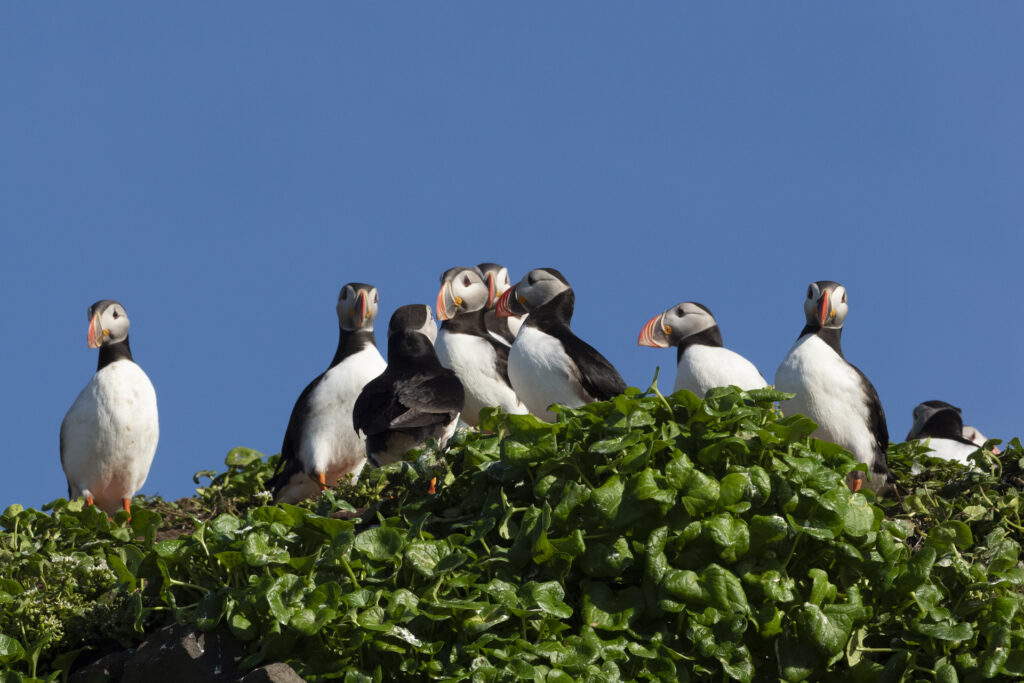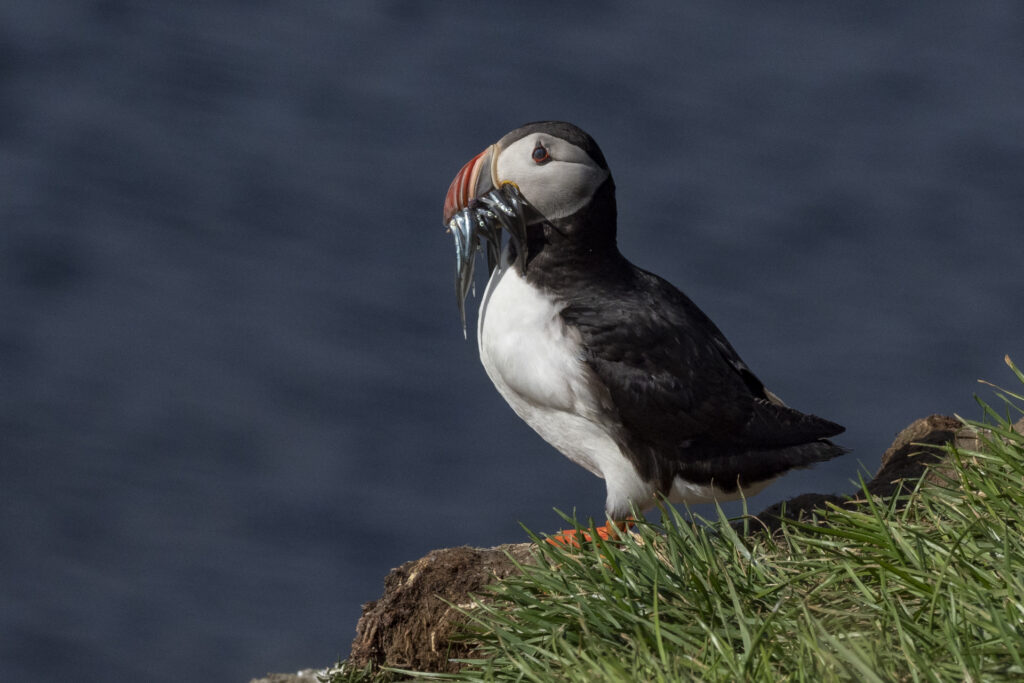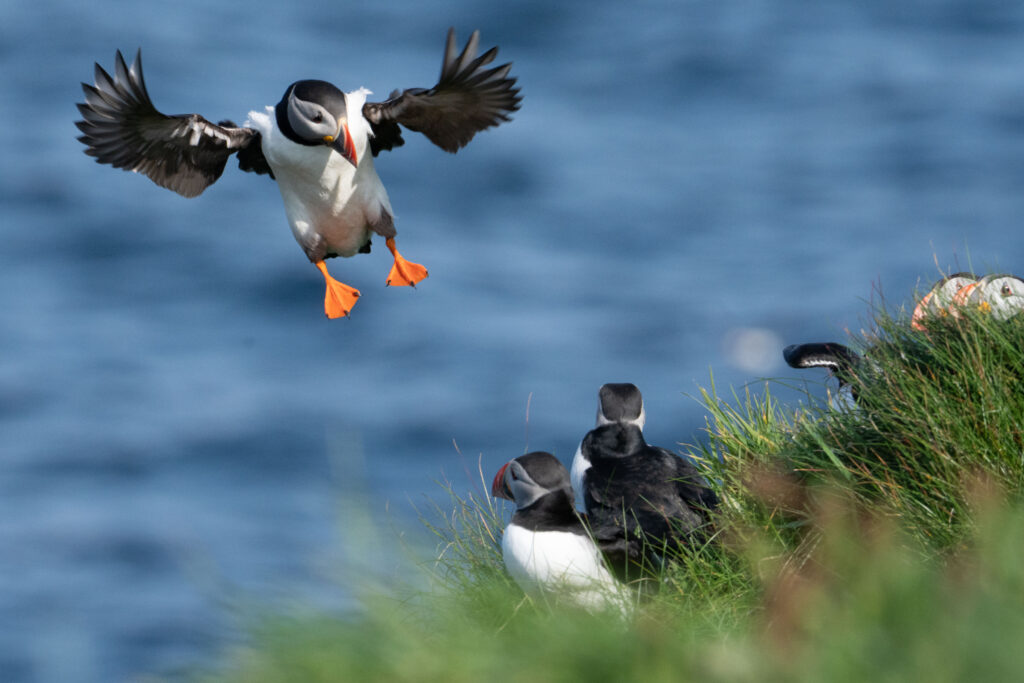When you head into the waters of the North Sea on board Aurora Expeditions’ Wild Scotland tour, prepare to have your eyes opened like you’d never expect. If you think you know Scotland, think again. On it its shores and in the surrounding ocean, Scotland is packing plenty of surprises, from its windswept isles to its wildlife.
One of the most beloved of Scotland’s creatures has to be the undeniably adorable Atlantic puffin. These instantly recognisable birds are just one of the fascinating creatures that populate the region, so let’s take a closer look at just what makes them special.

Introducing the Atlantic puffin
These birds look like mini penguins, spending the majority of their lives on the ocean – which can last up to 20 years. Often called a ‘sea parrot’, when the Atlantic puffin is not resting on top of the waves, they are doing what they do best, swimming.
Talented paddlers, the puffin have bright orange, webbed feet that serve them as a rudder as they steer through the water. As noted by National Geographic, these clever little birds can dive some 60 metres underwater and can stay there for 20-30 seconds.
Their bright-coloured beak is vividly colourful in spring but then fades to grey in winter. On the inside, it features a multitude of backwards-facing spikes, which enable the puffin to stuff its beak with small fish, the main component of its diet. According to Welcome to Scotland, the record number of fish a single puffin has been witnessed holding in its beak is over 60!

Because of their solid, slightly rotund body (well suited to diving), the puffins must work hard to stay airborne. Once they’re up in the air, their wings can flap up to an astonishing 400 times per minute! When the birds come in to nest during the spring and summer, they favour rocky outcroppings, using grass and feathers to build their home.
In Scotland, puffins come ashore from late April until the middle of August. Once the female lays her egg, she will share the incubating duty with her mate until it hatches. It is in July that you’ll tend to see puffins carrying beak-fulls of fish to their nests to feed their young. Like the gentoo penguin, Atlantic puffins will often reunite with the same mate each year.

Visit Wild Scotland
On our Wild Scotland tour, you’ll journey to the untouched wilds of the northern isles, visiting Neolithic sites over 5,000 years old, as well as charming villages, and the mighty castles which once housed Scottish clans. In addition to puffins, you’re also likely to see seals going about their days with dolphins and whales surfacing nearby.
You’ll also visit the World Heritage-listed St Kilda, as well as the historic Aberdeen and Kirkwall. On Orkney Island, you’ll encounter the village of Skara Brae, the Stone Age settlement, where you will walk the ground where villagers would have been going about their daily lives thousands of years ago.
Take a stroll through a traditional crofting village, and ponder at the mysterious standing stones – there’s no end to the adventures Scotland can provide.




